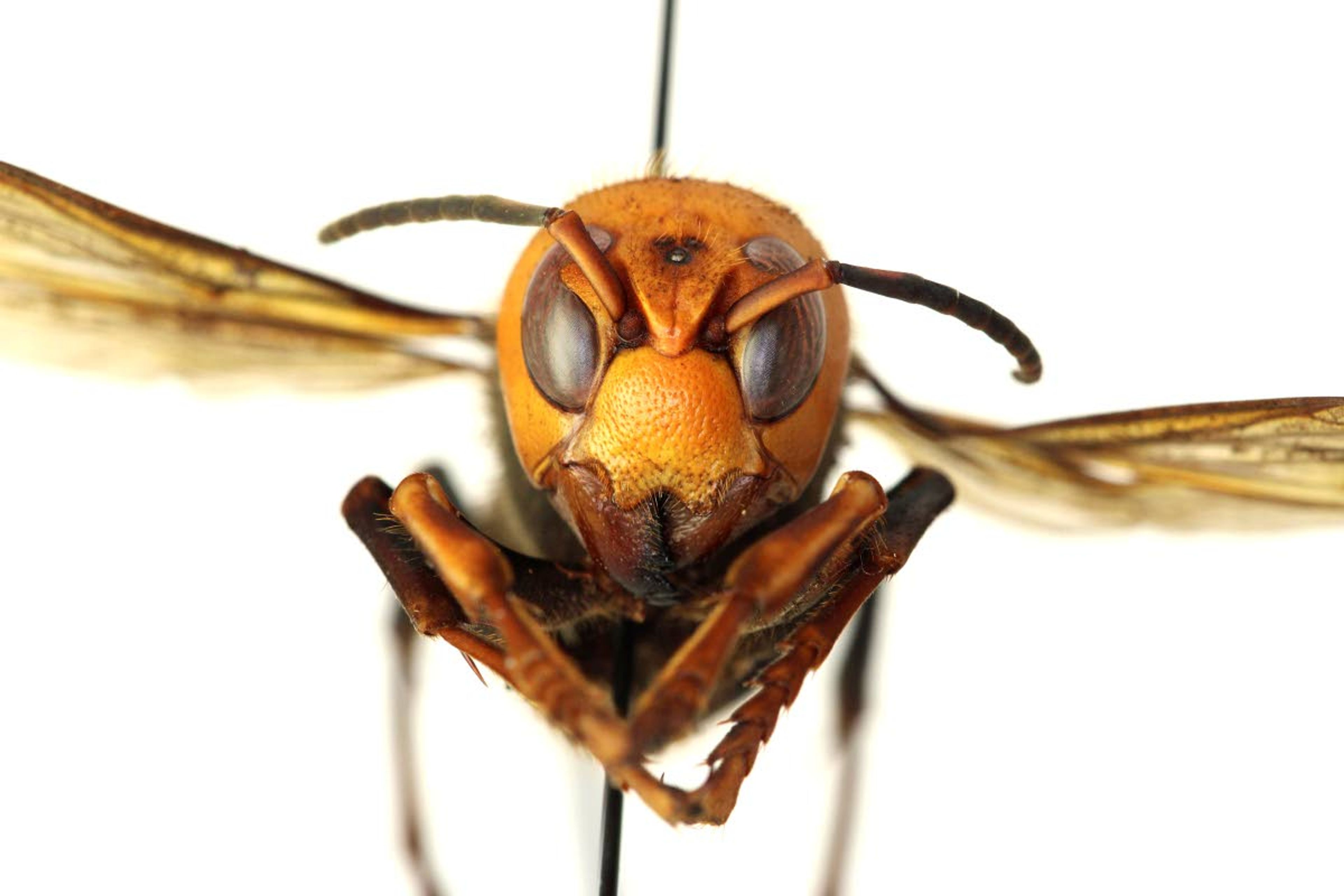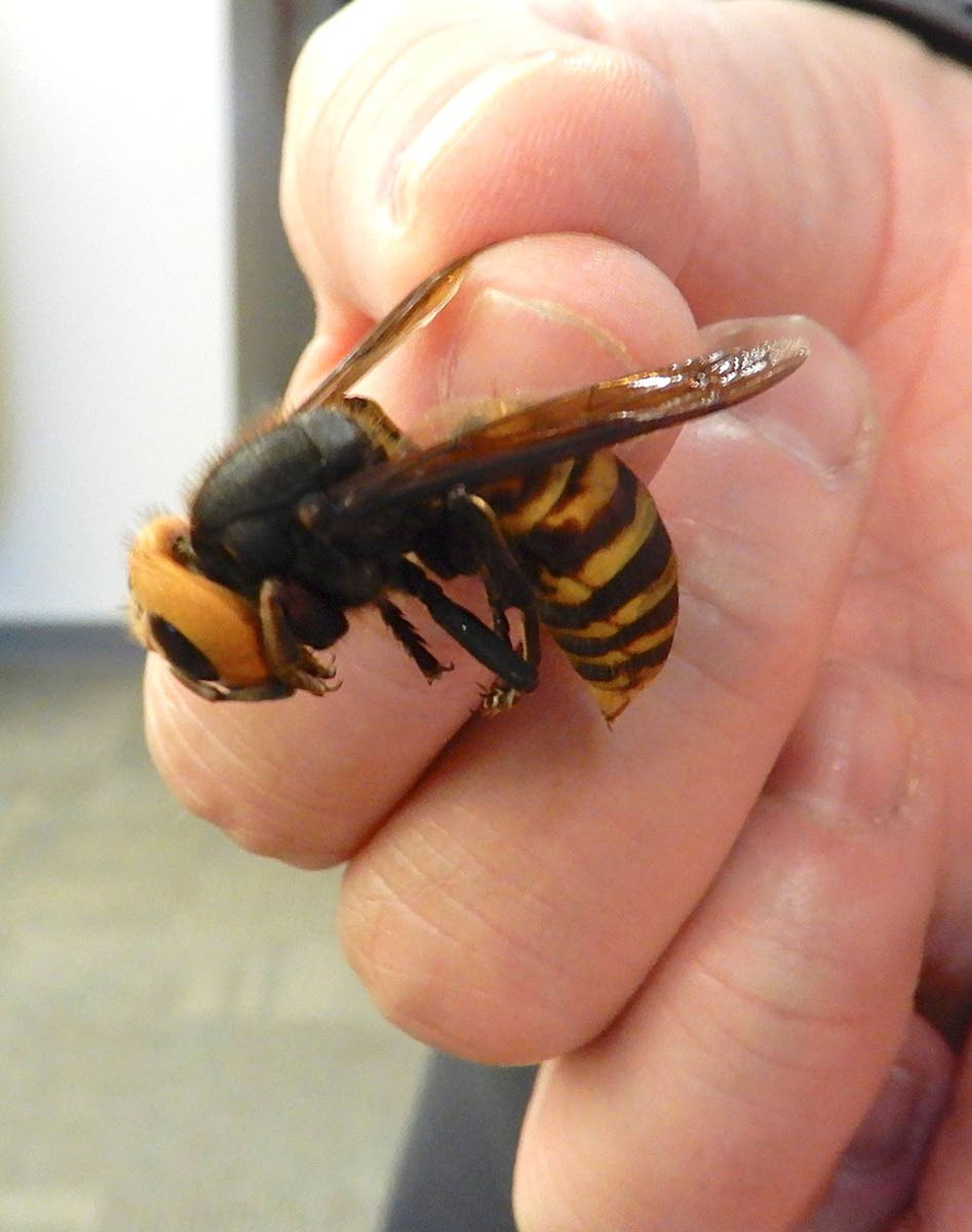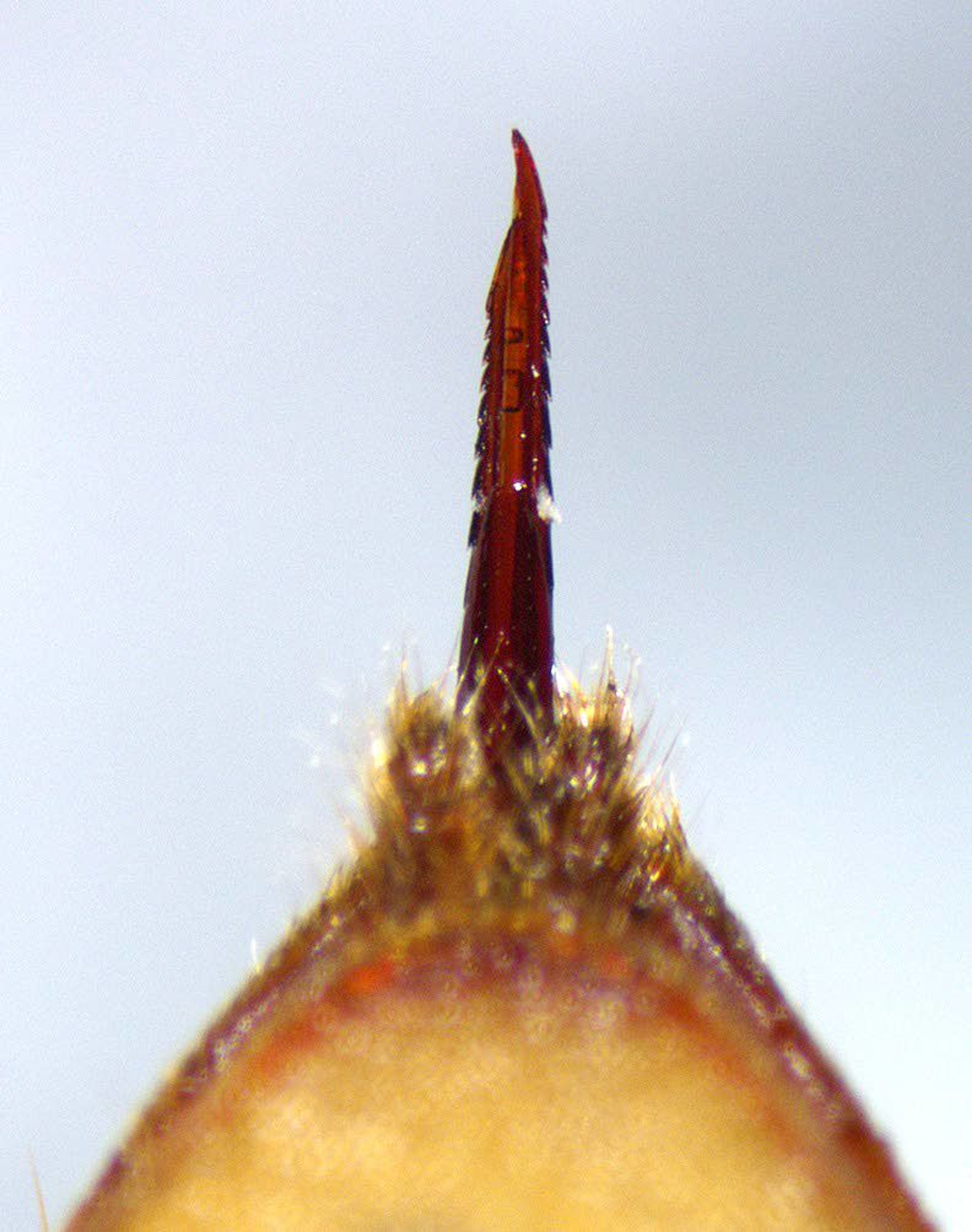World’s largest hornet sighted in Washington
Beekeeper stocks likely to feel greatest sting or potential invasion, though run-ins with humans could be painful
A massive, two-inch hornet with a stinger nearly a quarter of an inch long and an appetite for honeybees is among the latest invaders of Washington.
After two sightings on the western side of the state and the discovery of one nest located in British Columbia, scientists with Washington State University and the state’s Department of Agriculture are asking for the public’s help in hunting down and eradicating the Asian giant hornet from the Pacific Northwest. The giant insect is the largest hornet in the world and one hive means there are likely more.
There is the possibility that these hornets will have an array of effects on the local ecosystem, but scientists say those effects are difficult to forecast at this stage. However, WSDA Entomologist Chris Looney said in other places dealing with the encroachment of close relatives of the giant insect, the most immediately obvious effect has been on beekeepers.
He said a similar hornet has been implicated in the loss or weakening of as much as 30 percent of hives in Europe, according to beekeeper reports, with some areas experiencing as much as a 50-percent loss. This is unsustainable for many beekeepers, he said, especially smaller operations with fewer hives.
If the hornet establishes a firm toe-hold in the region, it would likely be disastrous for many. Losing hives could seriously hobble beekeepers’ ability to provide efficient pollination on demand and would definitely affect their profits — especially for smaller apiaries and hobbyists.
“We do know that the consequences to beekeepers will be real — I don’t think there’s any question to that,” Looney said. “Even as beekeepers are able to continue plying their trade, it will cost them more money and more effort.”
He said while honeybees do not appear to comprise the majority of this hornet’s diet, it’s attack behavior with other social insects is arguably the most remarkable. Looney said Japanese entomologists have described two different kinds of attack behavior — a hunting phase and a slaughter phase. In the hunting phase, a lone hornet may kill a honeybee or another prey species like a scarab beetle to bring back to the nest. The slaughter phase is much more aggressive and coordinated, he said.
“What happens is they start attacking all the bees but this time, instead of returning them to their nest, they simply kill them,” Looney said. “They bite the head off and drop the body on the ground and they do this until the hive is no longer able to mount any kind of defense at all.”
After clearing the hive, Looney said the hornets enter an “occupation phase” raiding it for larvae and pupae and leaving the honey largely untouched. Looney said Asian honeybees, who have coevolved with this massive hornet, have developed certain defenses to contend with the threat. However western honeybees, like those that are most commonly raised for honey production and pollination in the U.S., have no such defenses. A widely shared YouTube video appearing to show close relatives to the Asian hornet raiding a hive of honeybees claims 30 of the giants were able to kill more than 30,000 European honeybees in three hours.
“They are sitting ducks,” Looney said.
This species pretty much always nests in the ground and Looney has some easy advice for anyone who accidentally stumbles upon a nest while stomping through the underbrush — “Run away.” He said the hornets will snap their mandibles together, producing an audible click, to warn away unwelcome visitors.
WSU professor of entomology Tim Lawrence said the giants can sting with more than twice the force of a honeybee, can push through thicker material with its long stinger, and can sting multiple times. While a single sting is likely not dangerous on its own, Lawrence said it can deliver around seven times the venom of a bee sting and is much more painful. Lawrence said Justin Schmidt, a renowned specialist in stinging insects, described the giant Asian hornet as the “most intimidating and venomous insect in the world.”
Lawrence said western Washington — the climate, terrain and its Pacific proximity — is relatively hospitable to the insect but the same may not be true of the more arid Palouse. No sightings have been made in the eastern side of the state, but he said concerned beekeepers can place a trap at the front of their hives that will capture the giants but allow the comparatively tiny honeybee to pass through.
Looney said while indirect ecological impacts may be difficult to predict, many scientists hold that native ecosystems need to be protected from the disturbances of invasive species introduced by humans — even when they’re comparatively harmless.
“Not every introduced species changes the environment, but our ability to predict which ones will is pretty limited,” Looney said. “So our default at the Department of Agriculture is if we have the chance to keep a novel thing from being established — we do that.”
To report an Asian giant hornet sighting, contact the WSDA Pest Program at (800) 443-6684, pestprogram@agr.wa.gov or online at agr.wa.gov/hornets.
Scott Jackson can be reached at (208) 883-4636, or by email to sjackson@dnews.com.




